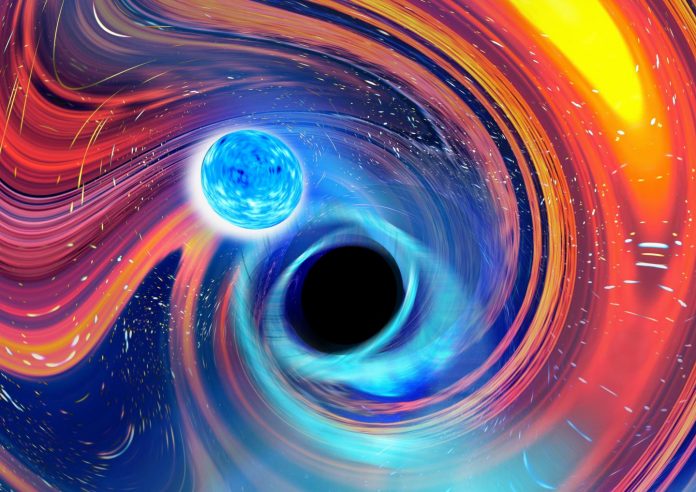In a galaxy 900 million light-years away, there were two black hole-neutron star mergers – creating gravitational waves that hit Earth only in January, 2020
Two events have been detected 10 days apart by team at Northwestern University, meaning this is the first-ever detection of a black hole merging with a neutron star.
‘Completing this picture is crucial’, says co-author
“Gravitational waves have allowed us to detect collisions of pairs of black holes and pairs of neutron stars, but the mixed collision of a black hole with a neutron star has been the elusive missing piece of the family picture of compact object mergers,” said Chase Kimball, a Northwestern graduate student who co-authored the study.
“Completing this picture is crucial to constraining the host of astrophysical models of compact object formation and binary evolution. Inherent to these models are their predictions of the rates that black holes and neutron stars merge amongst themselves. With these detections, we finally have measurements of the merger rates across all three categories of compact binary mergers.”
Because the signal was strong in only one detector, the team could not precisely determine the direction of origin. The signal was too quiet to confirm its detection, but data helped to narrow down the source’s potential location to about 17% of the entire sky, which is equivalent to the area covered by 34,000 full moons.
The team includes researchers from the LIGO Scientific Collaboration (LSC), the Virgo Collaboration and the Kamioka Gravitational Wave Detector (KAGRA) project.
‘May be the most massive neutron star known’
Vicky Kalogera, the principal investigator of Northwestern’s LSC group, director of the Center for Interdisciplinary Exploration and Research in Astrophysics (CIERA), said: “Following the tantalizing discovery, announced in June 2020, of a black-hole merger with a mystery object, which may be the most massive neutron star known, it is exciting also to have the detection of clearly identified mixed mergers, as predicted by our theoretical models for decades now.
“Quantitatively matching the rate constraints and properties for all three population types will be a powerful way to answer the foundational questions of origins.”
“We’ve now seen the first examples of black holes merging with neutron stars, so we know that they’re out there,” said Maya Fishbach, a NASA Einstein Postdoctoral Fellow and LSC member.
“But there’s still so much we don’t know about neutron stars and black holes – how small or big they can get, how fast they can spin, how they pair off into merger partners. With future gravitational wave data, we will have the statistics to answer these questions, and ultimately learn how the most extreme objects in our universe are made.”











